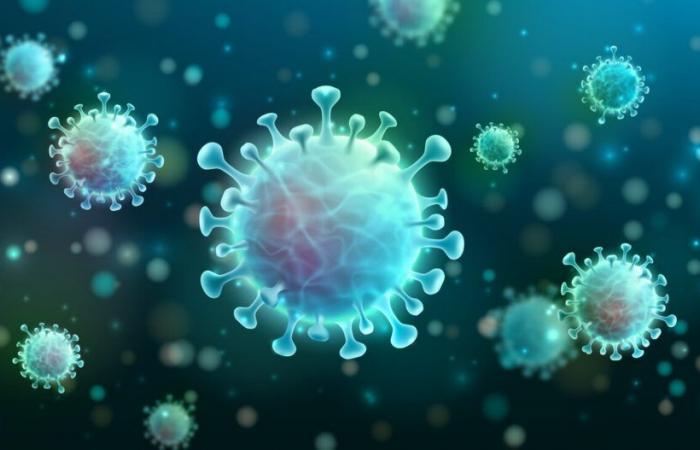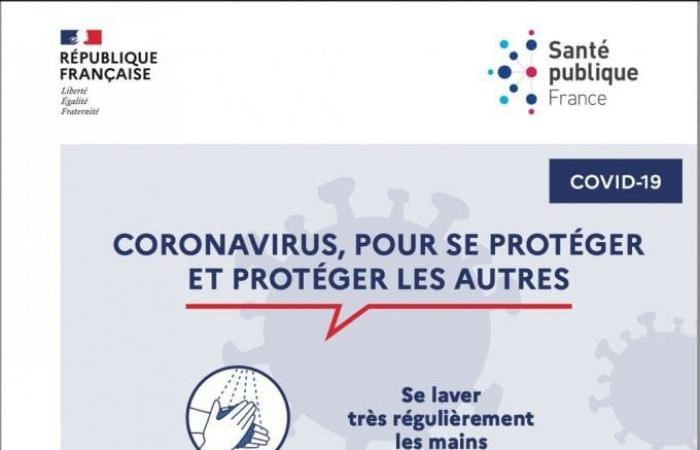Between 2020 and 2023, the Covid 19 virus infected 1 in 10 people according to the Pasteur Institute. The World Health Organization (WHO) report shows 6.9 million people died in May 2023.
What is this ?
Covid-19 is an infectious respiratory disease caused by SARS-CoV-2, a virus belonging to the coronavirus familyhaving emerged at the end of 2019 in China. First called 2019-nCoV, the virus was renamed “SARS-CoV-2” in February 2020, when its belonging to SARS-type coronaviruses was confirmed in 2020.
The origin of this pathology still remains unknown but according to the Pasteur Institute two hypotheses are being studied:
The first cases of SARS-CoV-2 around the Wuhan market point to a natural crossing of the species barrier from an intermediate host marketed at this location. This so-called “zoonotic” hypothesis is most likely according to scientists, but research must continue.
A second hypothesisformulated in the SAGO report (Scientific Advisory Group for the origins of novel pathogens commissioned by the World Health Organization), cannot be dismissed without being scientifically proven: the possibility of an introduction of SARS-CoV-2 in the human population following a laboratory leak.
The hypothesis ofa production of the virus in the laboratory for the purpose of introduction into the population has been rejected by almost the entire scientific community . This theory was fueled by fake news with no scientific basis.
Map: the Wuhan region, China, epicenter of the epidemic
© Creative Commons
© CC – Author: CIA – License: https://creativecommons.org/publicdomain/zero/1.0/deed.fr
Today Covid-19 is one of the 38 notifiable diseases in France to enable monitoring of the epidemic.
Covid-19 is a respiratory disease. The virus is transmitted by via respiratory droplets emitted by infected people when they cough, sneeze, talk, sing or breathe.
It is therefore important toapply hygiene rulesrespiratory, for example by covering the mouth and nose with the crook of the elbow when you cough and if you do not feel well, to stay home and isolate yourself until you are recovered.
The virus may persist airbornein an unventilated room. Its contagiousness is important. Scientists estimate that each infected person infects 2 to 3 people .
The virus can also maintain infectivity for a few hours on inert surfaces, which justifies good hand hygiene to avoid contracting it by handling contaminated objects.
What are the symptoms?
Environ 30 to 60% of people carrying the viruss, especially young children, are asymptomatic.
For others, the symptoms are the same as any acute respiratory infection such as fever or feeling feverish, chills, sweating, cough, shortness of breath, sore throat, tightness in the chest, cold, headache, body aches, unusual tiredness.
Less specific symptoms like diarrhea or loss of smelland taste may appear in some patients.
For elderly and immunocompromised people, those close to them may notice a sudden alteration of general condition, the appearance or worsening of mental abilities a state of confusion, repeated falls, rapid worsening of an already known illness.
It is important to recognize the suggestive symptoms so that appropriate measures can be taken to avoid contracting an infection and prevent individual transmission.
Covid long
We are talking about “Covid long” when, after being infected, the person is still suffering from initial symptoms or occurring secondarily for more than three months without these being linked to another pathology.
It is indeed about persistent phases and not simply a decrease in the initial symptoms of the disease over several weeks.
A chronic health condition that has consequences on social, family and professional life.
The WHO estimates that 25% of people who have been infected with Covid-19 have persistent symptoms more than a month later and at least 10% are considered “Long Covid” with symptoms persisting more than 3 months after infection.
Symptoms vary from one person to another and can fluctuate over time, but here are the main ones:
- shortness of breath, cough;
- chest pain or tightness, palpitations;
- extreme fatigue and fatigability, fever, pain, post-exercise discomfort;
- brain fog, difficulty concentrating or remembering, headaches, disturbances in taste or smell, dizziness;
- anorexia, abdominal pain, diarrhea;
- urticarial pruritus;
- anxiety, irritability and depressed mood.
What tests to do?
There are different types of tests to diagnose disease :
- virological tests (RT-PCR), which make it possible to determine whether a person is carrying the virus at the time of the test thanks to a nasal or saliva sample.
- antigen tests that are faster but less reliable than RT-PCR tests make it possible to determine whether the person is infected at the time of the test;
- serological tests, which detect the presence of specific antibodies and determine whether a person has developed an immune reaction after being in contact with the virus.
Since March 1, 2023, all policyholders are covered whether or not they are vaccinated.
This treatment does not require a medical prescription.
A co-payment ticket is introduced with the exception of certain cases where coverage by Health Insurance will be 100%:
- people benefiting from an exemption for a long-term illness;
- people aged 65 and over;
- people under the age of 18;
- healthcare professionals and their employees, staff of healthcare establishments;
- immunocompromised people, for antibody detection examinations (on presentation of a medical prescription);
- people subject to collective screening organized by a regional health agency or a prefecture within targeted populations, clusters or suspected clusters, or large-scale tests for epidemiological purposes in a specific territory, or insured persons undergoing screening organized by an educational establishment.
What are the treatments?
As with most viruses, symptomatic treatment is sufficient. For severe lung damage, patients may be hospitalized to obtain respiratory assistance as well as monitoring by health professionals.
Immunocompromised peopleor presenting risk factors for developing severe forms of the disease can benefit from antiviral treatments . These are prescribed by the doctor as soon as possible after confirmation of the diagnosis.
Vaccination limits the risk of developing serious forms of the disease as well as the ability to transmit the virus. The immunity provided by vaccination declines over time, requiring vaccination boosters to continue to be effectively protected.
All currently available vaccines are effective against serious forms and help limit the risk of being hospitalized.
The monovalent messenger RNA vaccine Comirnaty JN1 de Pfizer/BioNTechis available for the 2024-2025 vaccination campaign. The formulation of this vaccine has been adapted to the new variant.
There are for adults and children between 5 and 11 years old and between 6 months and 4 years old:
- Comirnaty JN.1 adult used in people 12 years and older;
- Comirnaty JN.1 pediatric for children aged 5 to 11;
- Comirnaty JN.1 for children from 6 months to 4 years old.
The vaccine is injected intramuscularly . Monitoring for 15 minutes after injection is recommended.
For the pregnant women or who are breastfeeding, vaccination is possible from the first trimester of pregnancy with an mRNA vaccine at a vaccination center or at their doctor or midwife. “There is no identified risk from vaccination to date for the mother and unborn child.while the Covid-19 infection of the mother is the cause of complications and death”, recalls the vaccination info service site on their site.
Severely immunocompromised peoplesuffering from certain cancers, people who have had an organ transplant and people on dialysis must also be vaccinated. They can receive the vaccine from 3 months after their last injection or infection.
The vaccine can be done from 6 months after the last injection . For immunocompromised people, people aged 80 and over and residents of EHPADs and USLDs, this period is reduced to 3 months after their last injection.
However, health institutions point out that anyone wishing to be vaccinated can receive an injectionagainst Covid-19.
In addition to vaccination, several barrier gestures limit the transmission of SARS-CoV-2. Notably :
- wear a surgical mask covering the nose and mouth. FFP2 masks, which are more filtering, provide better protection.
- wash your hands regularly (water + soap) or use a hydroalcoholic solution;
- cough or sneeze into your elbow or a tissue;
- avoid touching your face;
- use single-use tissues and throw them in the trash after the first use;
- greet without shaking hands, without hugs;
- maintain a distance of at least 1.5 meters from any interlocutor;
- ventilate the rooms well.
© Press service







